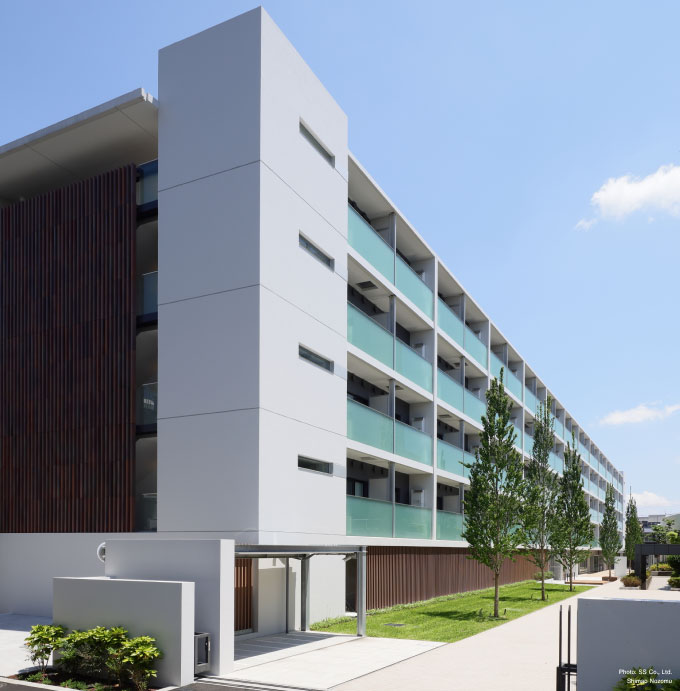
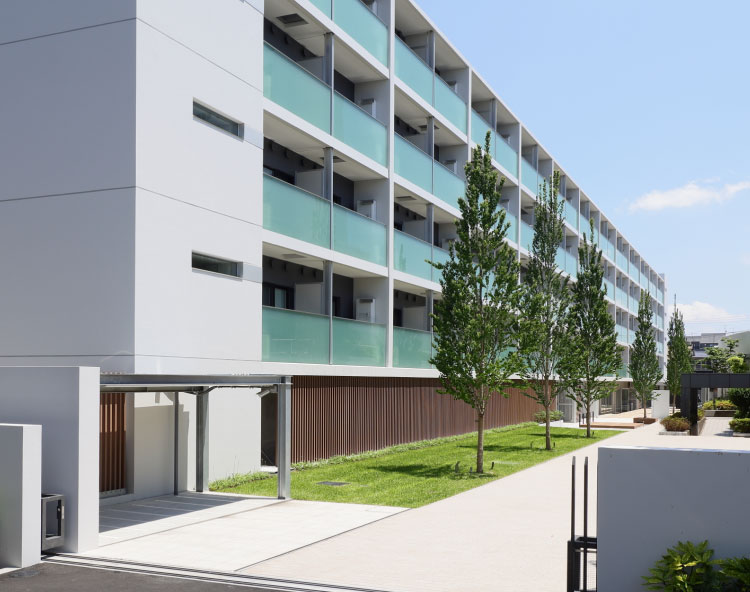

Eco-Crete R3 (Cem R3) / Eco-Crete KKC
Eco-Crete BLS / Eco-Crete ECM
(POINT 01)
Cement, one of the primary components of concrete, needs to be manufactured at high heat (1,450℃). As a result, a large volume of CO2 is emitted from the limestone used to make cement. In fact, cement manufacturing is responsible for about a quarter of the CO2 emitted during building construction.
Reduced-cement concrete is a product in which cement is partially substituted with other materials to lower the volume of CO2 emitted during the manufacturing process.
Our reduced-cement concretes include Eco-Crete R3, which is made from recycled cement manufactured from unused concrete at construction sites, as well as Eco-Crete ECM, Eco-Crete KKC, and Eco-Crete BLS, in which we have partially substituted industrial by-products for cement. Each of these reduced-cement concretes is suited for a different aspect of construction, and by using all of them we can greatly lower the amount of CO2 emitted during construction.
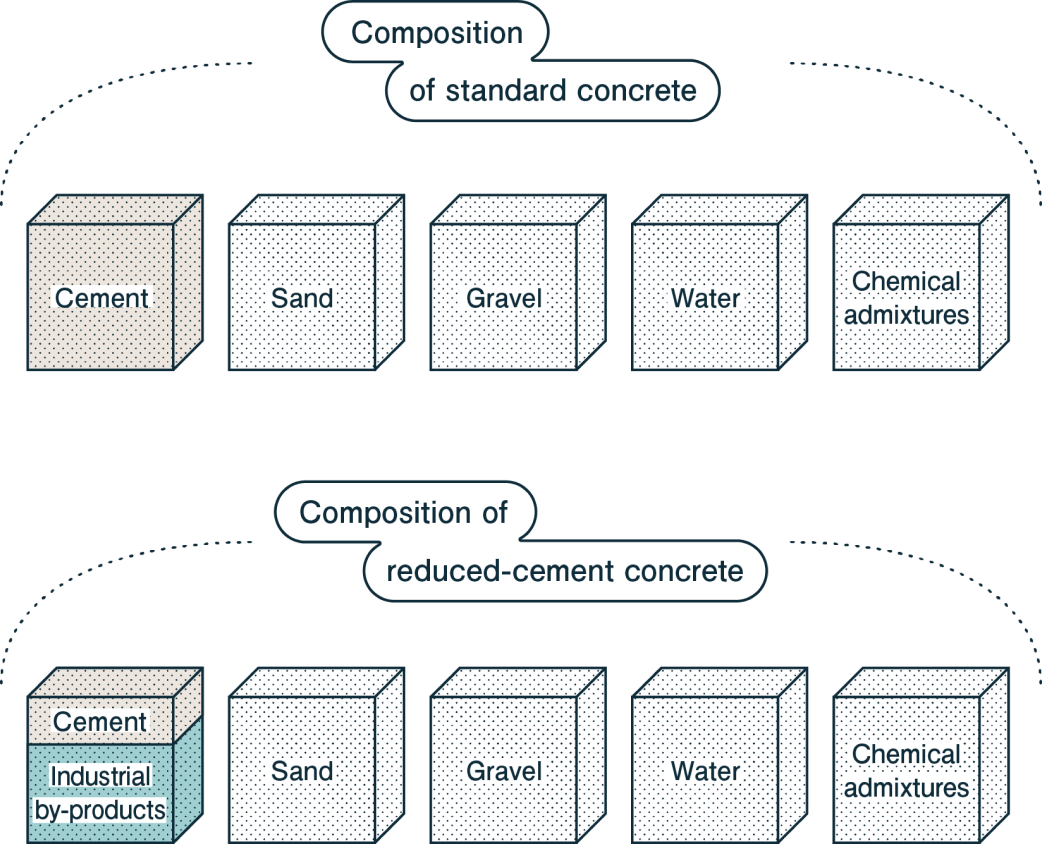
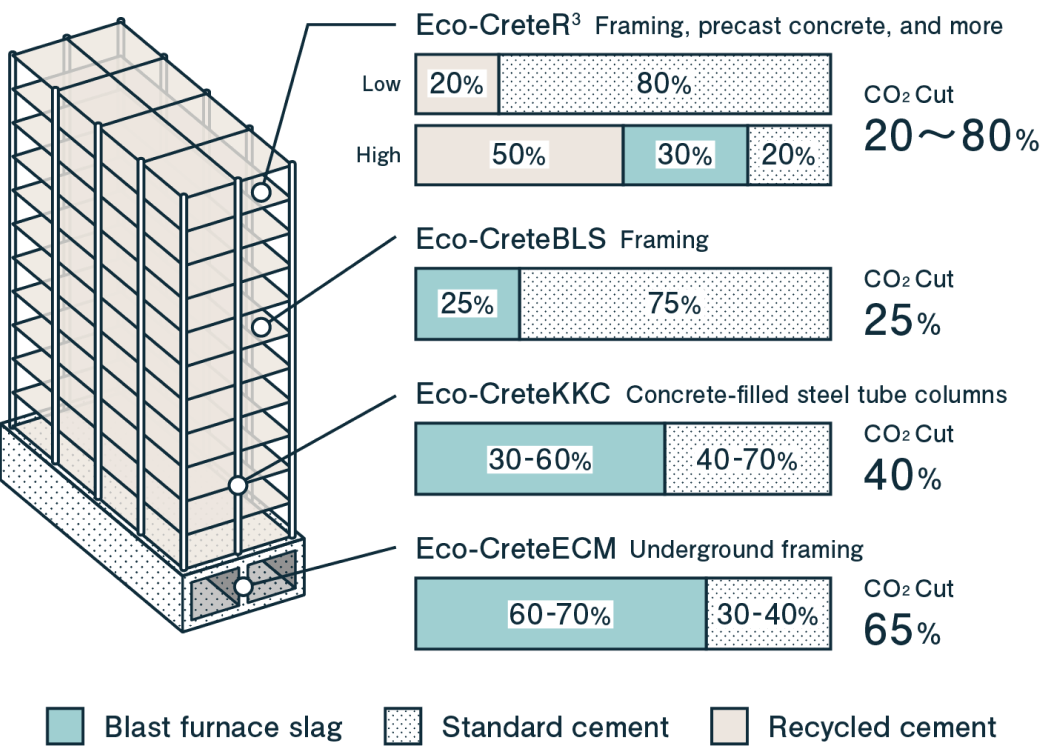
(POINT 02)
About 1-2% of concrete at a construction site goes unused for unavoidable reasons and gets discarded. However, by removing water and aggregates from this concrete and then pulverizing it, the cement in the concrete can be recycled. This is how we produce Cem R3, a recycled cement that we use to make our Eco-Crete R3 concrete.
Standard cement must be manufactured at a high temperature (1,450℃), which results in CO2 emissions of about 750 kg per ton of cement. Because Cem R3 is manufactured at much lower temperatures (150-600℃), CO2 emissions are about an eighth of standard concrete.
There are two types of Eco-Crete R3, each containing a different volume of Cem R3 to cater to different needs. The high-Cem R3 type, the manufacturing process of which results in a 90% cut in CO2 emissions, is suitable for precast framing products such as slabs.* The low-Cem R3 type, the manufacturing process of which results in a 20% cut in CO2 emissions, can be applied to a wider range of products, such as blocks and other concrete products, as well as ready-mix concrete.
* Precast framing products: Factory-made standardized concrete products that are needed to assemble the building frame
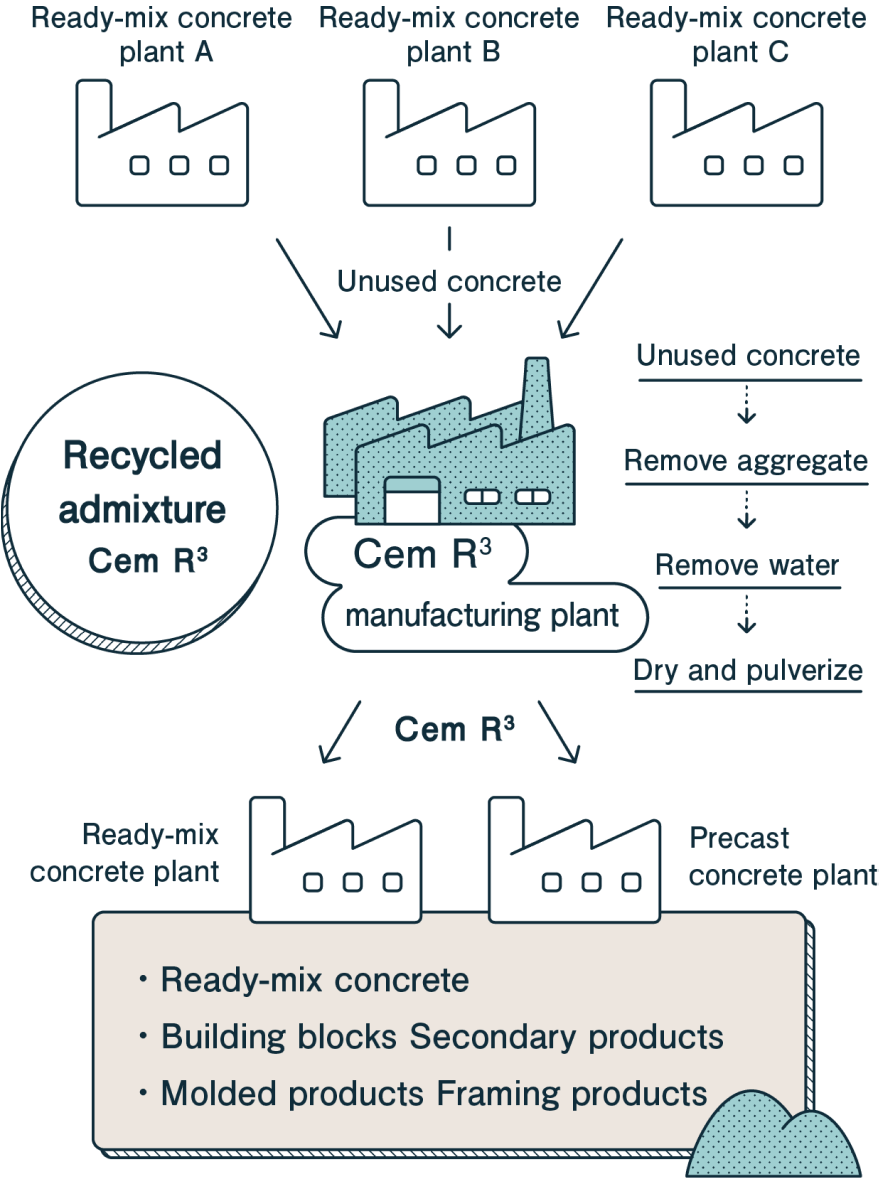
(POINT 03)
In these concrete products, the cement is partially substituted with dried and pulverized blast furnace slag, a by-product of steel manufacturing. Like cement, powdered blast furnace slag hardens when it reacts with water. The substitution allows us to reduce the volume of cement in the concretes and emit less CO2 to manufacture them.
The attribute of the concrete differs based on the volume of powdered blast furnace slag in its composition. For example, Eco-Crete ECM, which contains 60-70% powdered blast furnace slag, is suitable as mass concrete used in the underground structure of a building. Eco-Crete KKC, which contains 40-45% powdered blast furnace slag, is best for concrete-filled steel tubes used in columns and other structures. Eco-Crete BLS, which contains 20-30% powdered blast furnace slag, can be used in a range of overground structures, such as walls and floors. The higher the volume of powdered blast furnace slag in the concrete, the greater the cut in CO2 emissions in the manufacturing process.
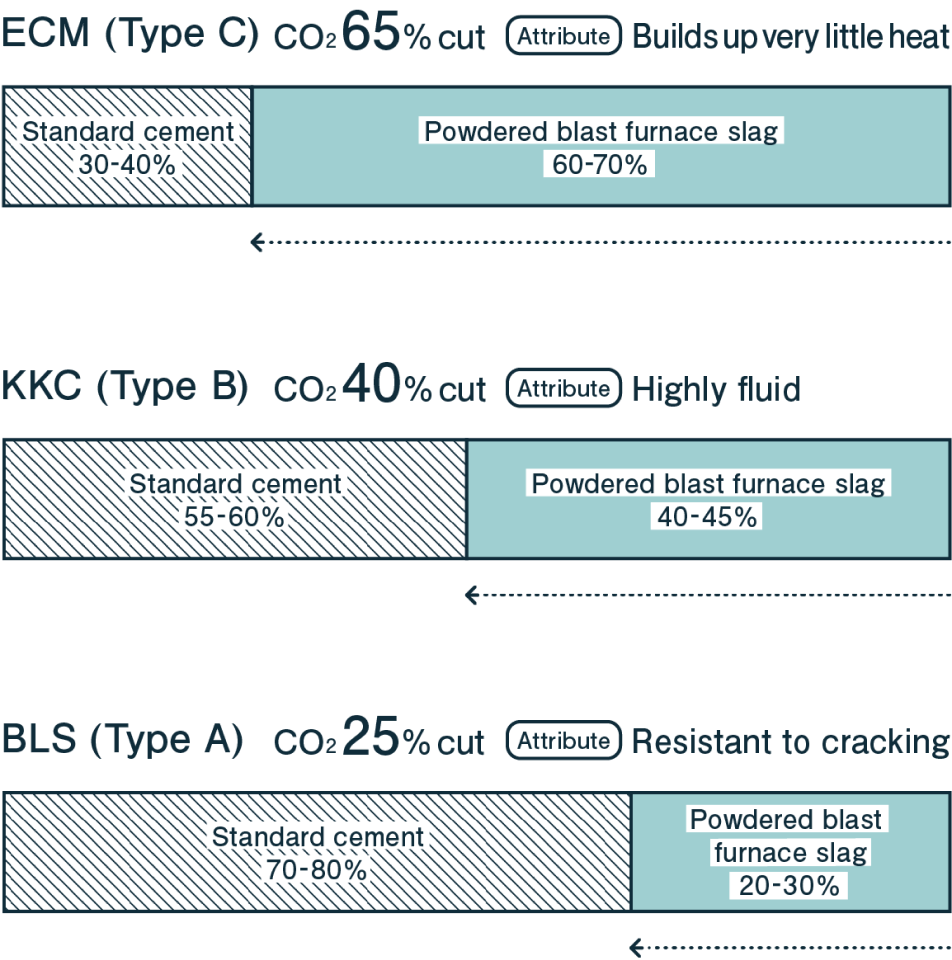
(POINT 04)
By using all three types of reduced-cement concretes in the construction of an average office building, we can cut overall CO2 emissions by about 10%—or about the volume of CO2 that can be captured by 108,000 cedars in a year.
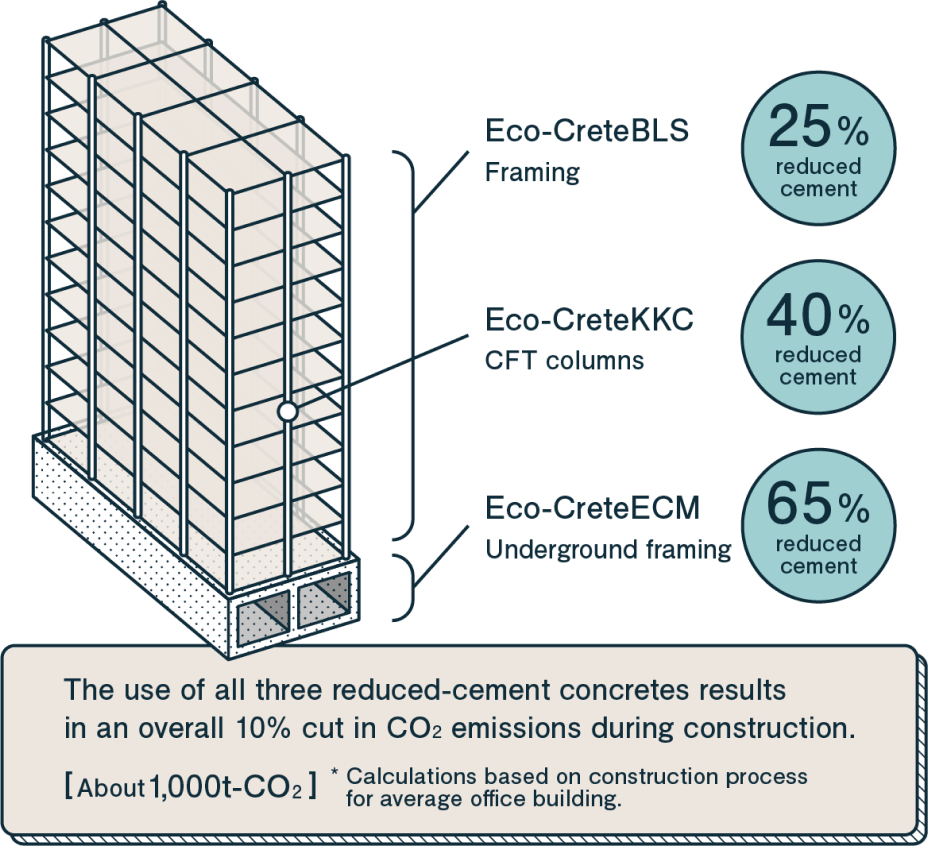
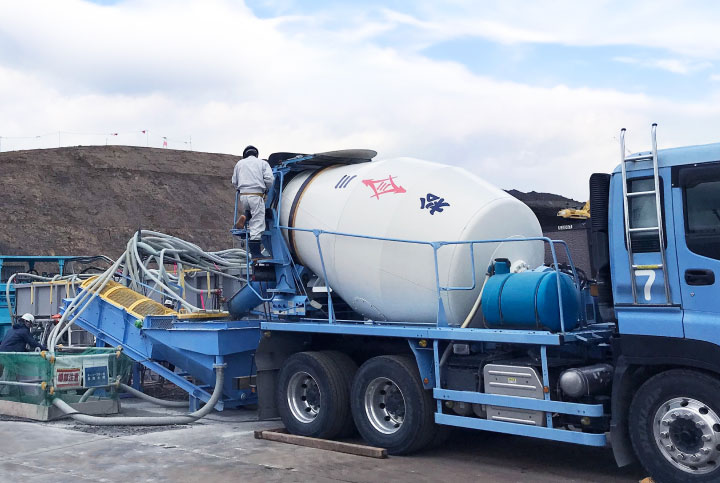
(08)
An innovative system that reduces concrete waste generated at construction sites to zero has been put to practical use at the construction site of a large-scale production facility in Kumamoto Prefecture.
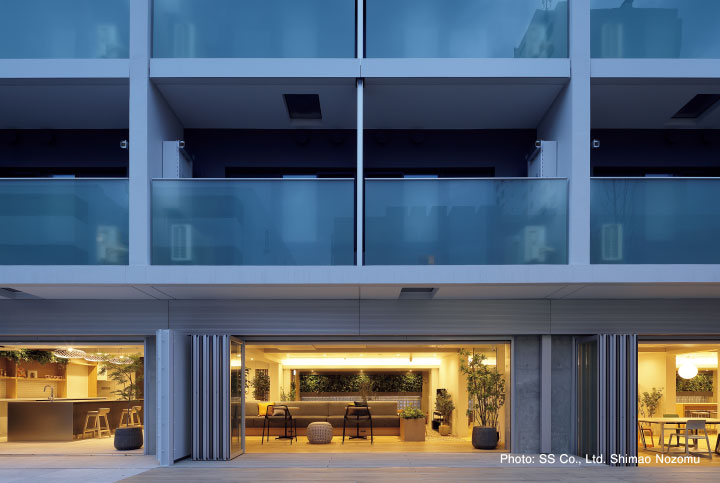
(07)
By using reduced-cement concrete, we were able to greatly lower CO2 emissions during the construction of Dommy Minami-Nagasaki Annex, a residential building.
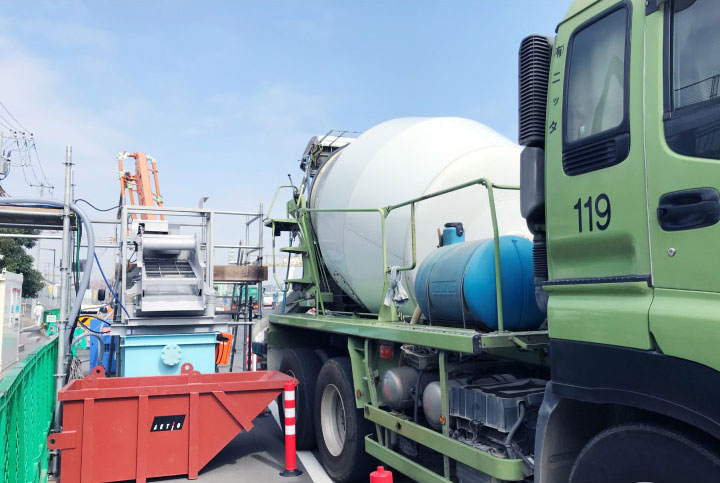
(05)
Usually at a construction site, a small amount of concrete goes unused and is either discarded or returned to the ready-mix concrete plant it came from.
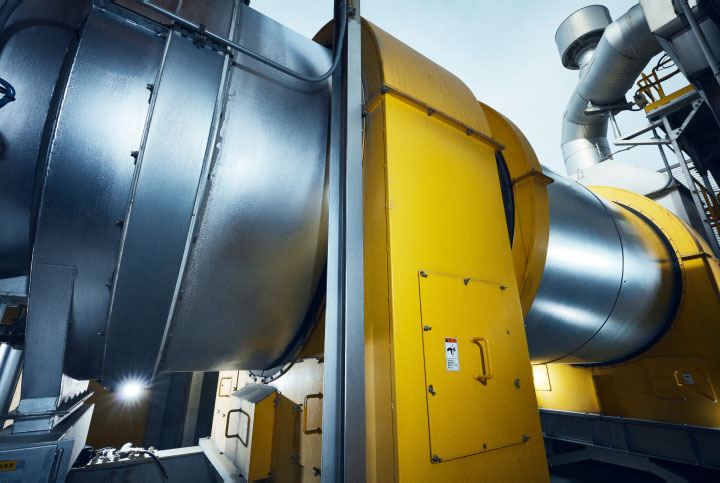
(02)
Working jointly with Sanwa Sekisan Co. and Tokai University, we have developed both Cem R3—a cement manufactured from recycled, unused ready-mix concrete that would otherwise be sent back to the plant it came from—as well as Eco-Crete R3, a concrete made from this cement.
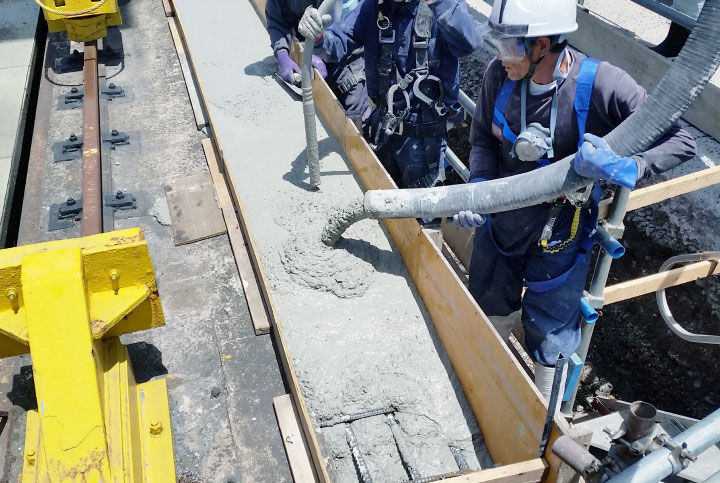
(01)
In 2014, we collaborated with one university and seven companies to develop Eco-Crete ECM, a reduced-cement concrete that can be manufactured with over 60% less energy and CO2 emissions than standard concrete.
